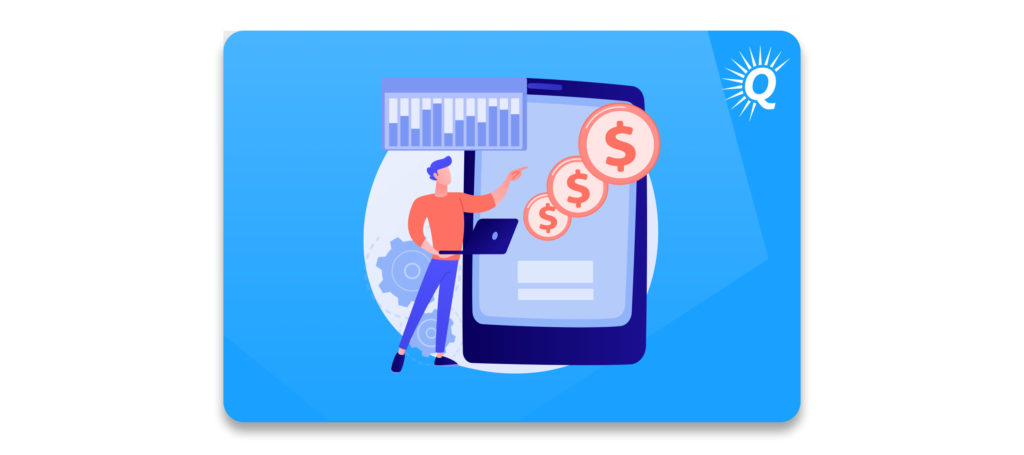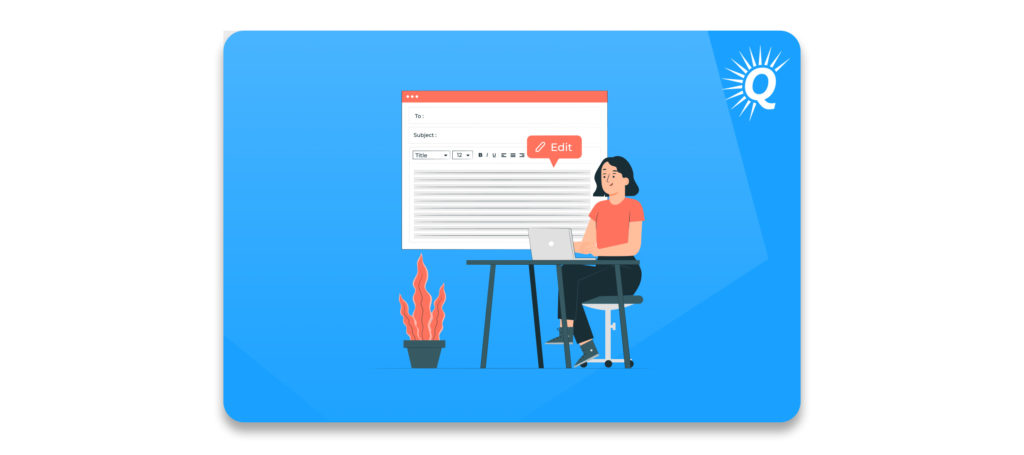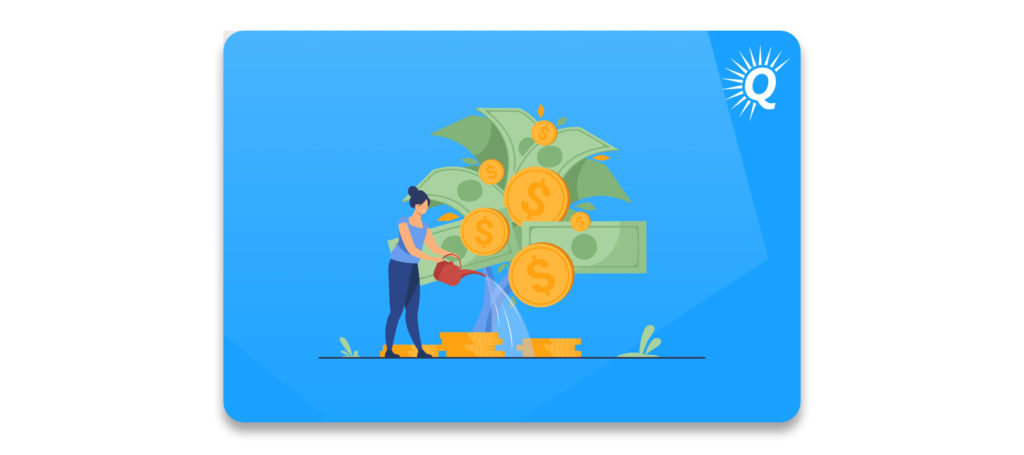Topics:
Never Miss a Beat - Get Updates Direct to Your Inbox
FILTER:


How Much Is Your Blog Worth? A Guide To Selling
By Ian Drogin
If you’ve built a successful blog, you might find yourself asking an important question: How much is my blog worth? To answer this question, you must understand the process of valuing a blog.
Like all online businesses, the value of your blog isn’t some random number. Rather, it’s based on several key factors, all of which can be measured and analyzed. When you understand the website valuation process, you’re in a much better position to maximize its value and execute a successful exit.


Whether you’re in the startup stage or preparing to sell your blog, this article will provide a clear blueprint for getting started with blog valuation. It will also provide actionable guidance for increasing its value and finding a qualified buyer.
While this article is a great resource, the best way to establish your blog’s value is by scheduling a free valuation with a qualified business Advisor.
Thinking of Selling Your Business?
Get a free, individually-tailored valuation and business-readiness assessment. Sell when you're ready. Not a minute before.
How Much is Your Blog Worth?
Before listing your blog for sale, you first need to determine its value. In general, blogs are valued using the SDE Multiple Method. In broad terms, there are two distinct parts to this equation — SDE and the multiple.
Seller’s Discretionary Earnings
SDE stands for Seller’s Discretionary Earnings. Essentially, SDE is the total profit that your blog generates. In calculating SDE, you don’t include discretionary expenses such as travel or home office rent expenses. SDE only accounts for expenses that will necessarily be passed along to the next website owner.
Because financial statements don’t distinguish between discretionary and non-discretionary expenses, it’s important to create an add-back schedule before calculating your blog’s value.
An add-back schedule is a list of all discretionary expenses incurred by your business. We call this an add-back schedule because these expenses are added back to your business’s net profit to determine its SDE.


How to Determine the Multiple
The multiple is a number by which you multiply SDE to arrive at the value of your blog. For example, if your SDE is $500,000 and your multiple is 2.5X, your blog is worth $1.25M (2.5 X $500,000 = $1.25M).
Four distinct elements determine the multiple used in the valuation process. We call these The Four Pillars of Value. These include:
- Growth
- Risk
- Transferability
- Documentation
How Growth Affects the Value of Your Blog
Most buyers look for businesses that have strong growth potential. As such, your blog will be worth more if its growth prospects look promising.
For blogs, there are several different areas in which growth is relevant:
- SDE
- Revenue
- Pageviews
- Email subscribers
- Domain Authority
- Ranking
SDE is the primary growth metric that buyers pay attention to, but certainly not the only one. If your SDE growth rate is positive, your website value will be higher than if it’s neutral or declining.
SDE growth is often positively correlated with revenue growth, but they are still two distinct metrics. Since revenue trends provide additional insight, buyers will be interested in understanding how your revenue has been changing over time.
“If your SDE growth rate is positive, your website value will be higher than if it’s neutral or declining.”
Additionally, pageviews is an important metric that every blogger must pay attention to. Of course, positive pageview growth is one of the primary goals for all content website owners. If your pageviews are consistently growing each month, then buyers will feel more confident in the future success of your business.


It’s important to note that smart buyers also examine the relationship between revenue and pageviews. If your website isn’t optimized for revenue, it’s possible that you’re not taking full advantage of the pageviews you’re receiving. That may hurt your SDE, but it can also present the next owner with a valuable growth opportunity. In turn, this can increase the overall value of your blog.
Number of email subscribers is another metric that should be constantly growing.
If you’re consistently generating new email subscribers, it reflects that your lead-capture pages are effective. Strong email opt-in rates instill additional confidence in buyers.
Domain Authority (DA) is another crucial metric that smart buyers pay attention to. As the name implies, a high DA reflects positively on your website’s authority and ranking. Like the other metrics, buyers like to see that your DA has been consistently increasing over time.
Additionally, it’s important to show that your blog content is consistently ranking for each long tail keyword you’re targeting. Further, it’s important that you’re maintaining your rankings over time and not experiencing too much content decay.


How Risk Affects Blog Value
Even if your blog is experiencing rapid growth, it may not be valued at its full potential if it’s riddled with risk. Not surprisingly, buyers will shy away from blog businesses that have a high potential of falling apart.
For blog businesses, the greatest source of risk is generally revenue diversification.
If your blog relies on just one source of revenue (i.e. sponsored content posts), then you’re exposed to significant risk. If your single revenue or traffic source gets shut down, the business is in trouble.
Because of this reason, buyers won’t just look at how much revenue the business generates, but also where that revenue is coming from.
“If your blog relies on just one source of revenue (i.e. sponsored content posts), then you’re exposed to significant risk.”
If buyers examine your blog and see that you have several different revenue streams, it’ll be seen as a less risky investment. For example, let’s say you have a lifestyle blog that generates income through affiliate offers, premium content, ebooks, and a YouTube channel. Buyers will feel more confident in the stability of your business with these multiple revenue streams. In turn, your website value will be higher.


How Much Is My Blog Worth? Part of the Answer Lies In Its Transferability
Maybe your blog generates a million dollars per month, but that’s worth nothing to someone else if they’re not able to experience those results under their own ownership. In addition to meeting high standards of SDE, growth, and risk, it’s essential that your business can be effectively transferred to a new owner.
Some blog businesses experience challenges when it comes to transferability. For example, let’s say you have a food blog or business blog that depends heavily on your own personality. Maybe, you’re constantly promoting it on your own personal social media accounts. Or perhaps, you frequently use your own photos, videos, or voice to attract pageviews. If that’s the case, a new owner might have a difficult time stepping in and taking your place.
Now, there can be solutions for selling personality-based businesses, but it can still be a challenge. In some cases, it may be preferable to disentangle yourself from the blog, if possible. In other situations, the buyer may agree to purchase the business, as long as you continue your role as the face of the business. Such solutions may be less than ideal, but still an appealing alternative to maintaining full ownership.


On the other hand, if your blog is not reliant on your presence and personality, selling your blog will be much easier. In turn, the economic value of your blog will be higher.
Sound Documentation Makes Everything Easier
If your blog business has clean financials, well-organized records, and clear operating systems, selling your business will be a relatively simple process.
On the other hand, if you’ve been keeping track of your finances on a napkin and doing everything yourself, you’ll likely encounter issues. Without clear visibility, serious buyers are going to be very hesitant to make an offer. In other words, your documentation practices will play a significant role in determining the value of your blog.
“Your documentation practices will play a significant role in determining the value of your blog.”
The first element of documentation that buyers look at is your financials. Smart buyers will want to see that you can provide monthly profit and loss statements (P&Ls) on an accrual basis. These allow buyers to clearly understand the strengths, weaknesses, and opportunities facing your business.
Additionally, buyers will want to know that there are clear instructions for performing all of the blog’s core operations. For example, if a team of writers writes each blog post, it’s important to have a management system in place. If you accept guest post articles from other writers in your niche, you should outline your article acceptance criteria in an SOP. In short, everything that happens within your business should be clearly documented and easy to show a new owner.


How to Increase the Value of Your Blog
Determining how much your blog is worth is a necessary step along the path to selling. However, that’s not the only reason the valuation process is important.
A blog valuation doesn’t just tell you how much your blog is worth. Rather, it reveals your blog business’s strengths, weaknesses, and opportunities. By gaining further insight through the valuation process, you become better equipped to improve your business. In turn, you’re able to increase the market value of your blog.
“By gaining further insight through the valuation process, you become better equipped to improve your business.”
While each blog business is different, there are a few steps that generally increase your website worth. These include:
- Increase your pageviews
- Target new longtail keywords
- Integrate a social media strategy
- Build a larger email list
- Diversify your revenue sources
- Offer an online course
- Create a paid membership
- Optimize your affiliate offers
- Automate your business operations
- Increase your blogs transferability
Increase Your Pageviews
When blogging, the number of pageviews plays a critical role in the success of your blog. It impacts adsense revenue, affiliate sales, email subscribers, and more.
To increase the value of your blog, double down on the strategies that are already driving pageviews. For example, if you’ve discovered that titles with lists (i.e. “Top 10” lists) consistently perform well, make sure to create more articles that follow that framework. If product review blog content consistently attracts blog readers, then prioritize those articles. In many cases, paid traffic is a viable option to increase website visitor activity. This is especially true if you have a high-end offer with a high conversion rate.


All blogs and content sites are different, so it’s important to pay attention to your own unique performance metrics to increase pageviews.
Target New Longtail Keywords
Most successful blog owners are constantly seeking to rank for new longtail keywords. Whatever niche you’re operating in, be sure to always be looking for new SEO ranking opportunities.
Ranking for new longtail keywords is important for a few reasons. For starters, it helps you increase your total website traffic. Secondly, it allows you to diversify your organic traffic sources so you’re less reliant on the articles that are already ranking well. Thirdly, the more articles you have that are ranking, the higher your overall site Domain Authority will be. In other words, increasing the breadth of articles has a synergetic effect on all of your blog articles.
Tools such as Surfer, Jasper, and MarketMuse can help you establish an effective, data-driven content strategy.
Using Social Media to Grow Your Blog
Social media is another avenue for growth that some bloggers pursue.
If you have a well-established Twitter, Facebook, or Instagram account, you may be able to leverage it to increase your blog traffic. For example, every time you publish a new blog article, consider making an Instagram post or Tweet announcing its release. In other cases, blog owners leverage influencer marketing instead of relying on their own social accounts.
If you’re also interested in increasing your social media followers, you can also leverage your blog to attract more social media followers.
Grow Your Email List
Email is widely believed to be the most effective communication and sales channel. Unlike other platforms, including your blogging platform, you have immediate and direct access to your customers if they’re on your email list.


For this reason, email lists can be extremely valuable. If you’ve built authority through content marketing, you’re leaving money on the table if you’re not leveraging email marketing.
The most common way to grow an email is through a lead-magnet, also referred to as a lead capture page or opt-in page. Try to think of content that would be so valuable that customers would pay money for it. Then, offer that content for free in exchange for your blog readers’ email addresses.
“If you’ve built authority through content marketing, you’re leaving money on the table if you’re not leveraging email marketing.”
If you’re already capturing email addresses, it may be smart to test new opt-in pages. Create several, measure the results of each, and then focus on whatever yields the greatest opt-in rate.
Diversify Your Revenue Sources
In the previous section, we mentioned that diversifying revenue is an important element to minimizing risk. If you want to maximize your blog’s monetary value, it’s critical that you have multiple revenue streams.
Optimally, you should continually add revenue sources as you grow. A few common sources of revenue for blogs include:
- Email marketing
- Affiliate offers
- Ad space
- Online courses
- Paid memberships
“If you want to maximize your blog’s monetary value, it’s critical that you have multiple revenue streams.”
Offer an Online Course
Online courses can be a great way to increase your blog’s revenue. If you’ve built authority in a specific niche, why not leverage your expertise while contributing value?
Depending on your niche, online courses can be sold for anywhere between a few dollars and a few thousand dollars (or more). If you pursue this route, make sure to do your research, create high-quality course material, and invest in marketing. Online courses can take work, but they can definitely pay off.
Some bloggers choose to have separate domain names for each digital product they offer.


Paid Memberships
Similar to online courses, paid memberships can be a great way to leverage your authority, increase customer lifetime value, and increase revenue. If you’re able to create extremely high-quality, expert content, consider charging for access to it.
Paid memberships usually require that you’ve already built a loyal audience of blog subscribers. If you’ve mastered search engine optimization strategies, paid content may be an effective next step. Make sure that there is a clear difference between your free and paid content.
Optimize Your Affiliate Offers
Many online business owners figure out something that works and then stick with it. There’s nothing wrong with that approach, but it’s also important to be continually researching and improving.
If you’re currently selling affiliate offers that sell well, that’s great! However, what if you could be selling even more and contributing greater value to your customers’ lives?


Many smart bloggers test a vast variety of affiliate offers in order to determine which ones perform the best. In some ways, bloggers need to view themselves as affiliate marketers. And like affiliate marketing, it can take a bit of work, but even a modest increase in monthly sales can lead to significant growth in annual revenue SDE. In turn, your SDE growth will be multiplied when calculating the value of your blog.
Automate Your Blog’s Business Operations
If your blog is easy to manage and provides passive income, it will be worth more. This is true whether you decide to sell or continue managing the blog yourself.
To simplify the process of managing your blog, try to identify tasks that can be easily automated. For example, if you generate Google analytic reports each week to measure performance, consider hiring a virtual assistant to complete the task for you. Of course, hiring a competent team of writers can dramatically reduce your workload and increase blog automation.
“If your blog is easy to manage and provides passive income, it will be worth more.”
Increase Your Blog’s Transferability
The easier it is to transfer your blog to a new business owner, the more valuable it will be (all else being equal). Therefore, make sure to remove as many barriers as possible in the transferral process. As mentioned in the previous section, it’s best if you’re able to remove your own identity from the blog before listing it for sale.
Buy a Profitable Online Business
Outsmart the startup game and check out our listings. You can request a summary on any business without any further obligation.
Pros and Cons of Selling Your Blog
In addition to asking yourself, “how much is my blog worth?”, it’s important to consider how the choice will impact your life. To make a fully informed decision, it’s wise to think about the pros and cons of each option.
Pros of Selling Your Blog
There are several key benefits of selling your blog, including:
- Creates opportunity for other ventures
- Frees up time for personal interests
- Provides capital for both personal and professional pursuits
Of course, selling your blog opens up opportunities for other ventures that you want to pursue. Whether you’re considering launching a new business or switching careers, selling your blog can create more space in your life. This is especially true if your blog requires lots of time to manage. For some writers, looking over income reports and financial metrics, managing sponsored post content, and engaging in blog marketing loses its interest over time.


Similarly, letting go of your blog can allow you to spend time engaging in other interests or being with your family.
Of course, successfully selling your blog can provide you with additional capital. Depending on your personal financial situation, selling your blogging business can open up new doors and possibilities.
Cons of Selling Your blog
Although selling your blog can be a wonderful experience, it’s important to be honest with yourself about the ‘cons’ of the decision. Every situation is different, but a few common cons of selling your blog include:
- Losing your blog income
- Missing out on growth opportunity
- Uncertainty of the future
The most notable downside to selling is the loss of blog income. If you’ve been relying on your travel blog to fund your adventurous lifestyle, it’s important to think about how you’re going to generate income once your blog is no longer yours.
Of course, once you sell your blog you’re not able to reap the rewards of any future success it experiences. That might be okay with you, but it’s still something to consider.


Additionally, if you’re not sure how you want to spend your time after selling your blog, you could encounter confusion. Therefore, it’s often wise to set a clear intention for how you want to spend your time before letting go of your blog business.
Finding a Buyer for Your Blog
There are a few different options you have when it comes to finding a buyer for your blog business.
If your blog is relatively small, then you may want to consider listing it yourself on a public platform. However, if it’s a bit larger (>$100,00) it is typically best to work with a qualified business Advisor in order to receive maximum value and the best deal possible. They can also value your blog far more accurately than any website value calculator you could possibly find.
When you work with a website broker, not only will your blog be presented well, but it will also receive exposure from a large audience of qualified buyers. This enables you to target buyers who are serious and well-funded. Whatever path you choose, make sure to do your research, explore different options, and establish a strategy that allows you to receive the value that your blog is truly worth.
Thinking of Selling Your Business?
Get a free, individually-tailored valuation and business-readiness assessment. Sell when you're ready. Not a minute before.





